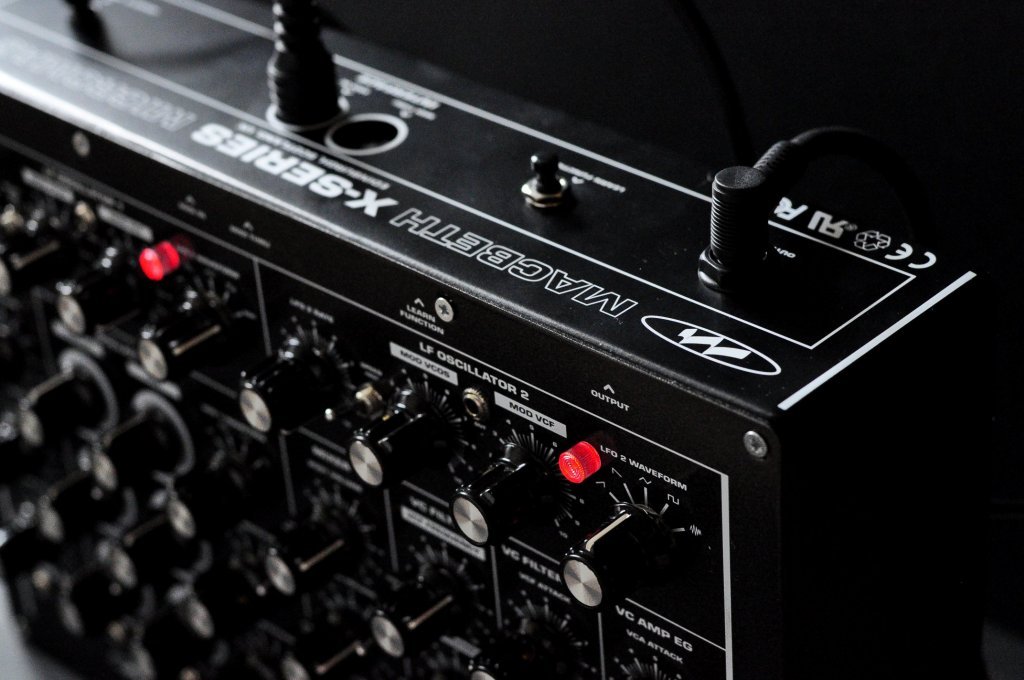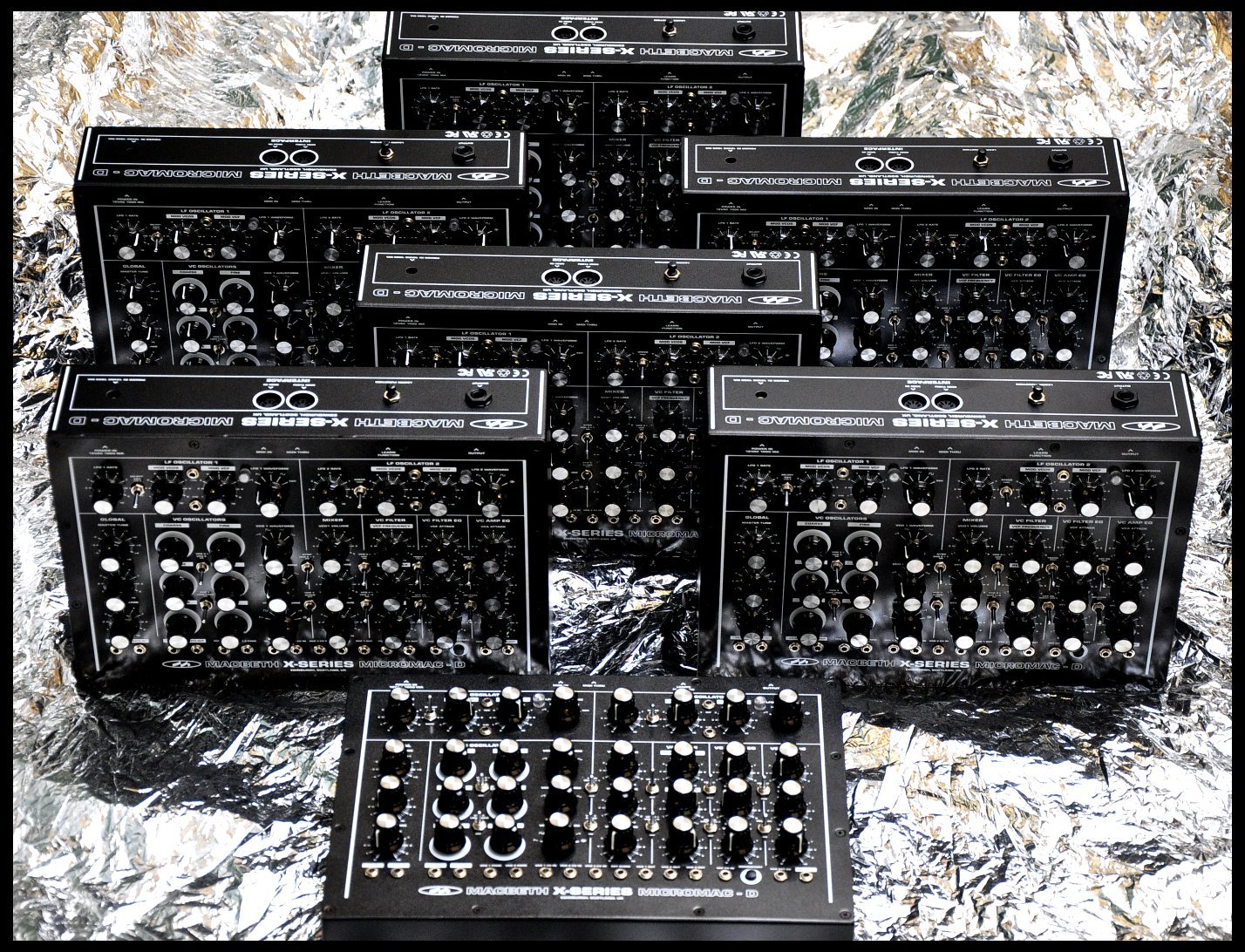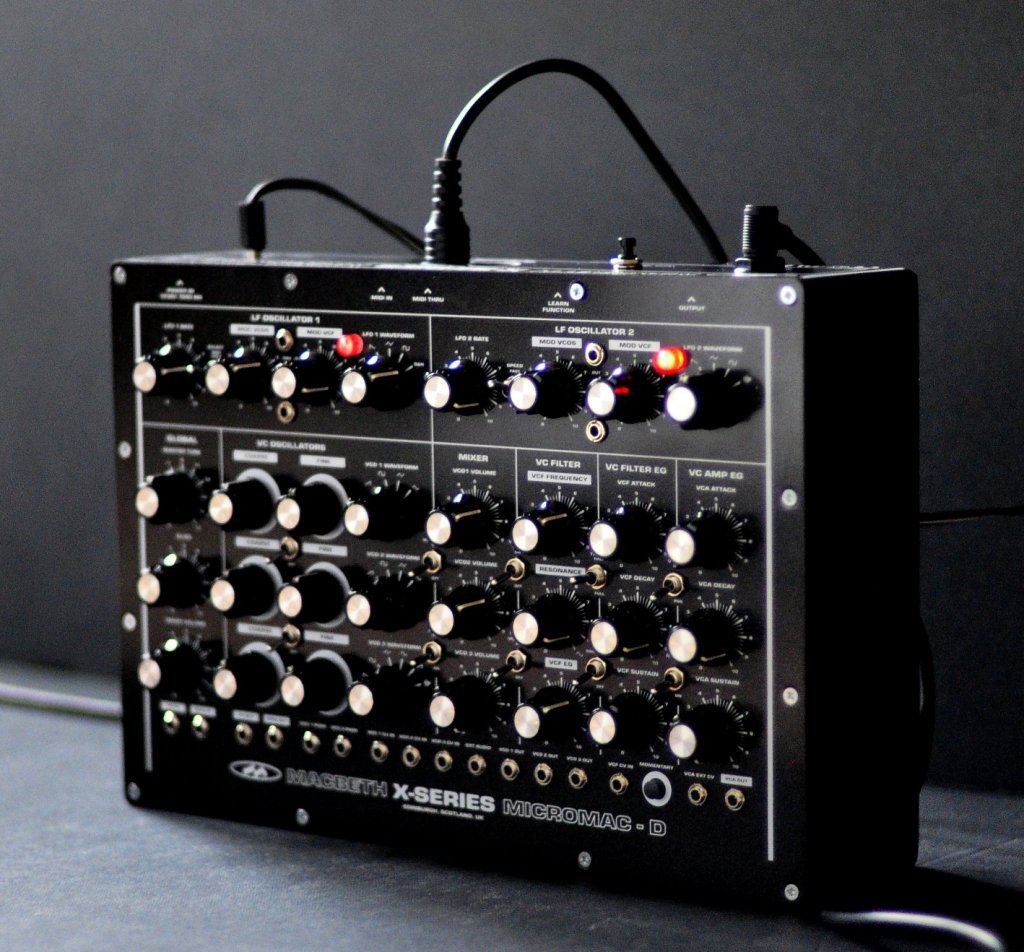Description | The micromac is a full scale integrated analogue synthesizer in a very compact space. there are two units to be made available. The micromac-d is aimed at those who wish to take a synthesizer into the live performance domain. The micromac-d is housed in a compact desktop unit coming with an extra two lfos and a sophisticated midi/glide/lfo control section- allowing the unit to be used in many situations where it may be the only analogue instrument in use.
The highest priority was to design a synthesizer that would have not one oscillator, or even two- but three voltage controlled oscillators. key was to have more than the standard sawtooth and square waveforms available- but also to employ triangle waveforms and sine waveforms. it was also also deemed very important that the oscillators would have their own voltage control inputs and separate audio outputs to integrate with other modular synthesizers. another very important audio component was the inclusion of a noise generator. any full-scale synthesizer must have dual envelope generators. the first eg is key to sweeping the filter- but a separate eg is also very important to shape the final output or voltage controlled amplifier section.
Oscillators as sound generators are very important for audio but they are extremely important for control and modulation effects- and this is why the third oscillator can double as an audio frequency modulator as well as a low frequency oscillator. Looking at many previous designs of voltage controlled filters from the past, Macbeth designed a filter that uses the very same parts as used on vintage equipment. the result is a bold, resonant filter capable of a very deep bass end a fantastic for lead solo work. From experience, parts selection is also key to the overall sound of a synth- many now work with surface mount technology- not the micromacs- they use the same kind of through hole part technology associated with the powerful synths of old! if the micromac sounds like old school gear- you know why! |
| Brand | MacBeth Studio Systems |
| Model | Micromac-D |
| Device | Synth |
| Type | Desktop |
| Engine Type | Modular (Semi) |
| Engine | VCO |
| Voices (max) | 1 |
| Multitimbral | 1 |
| Oscillators | 3 |
| LFO | OSC 3 can be used as LFO. |
| Engine Detailed | 3 VCO, Pulse, Saw Up, Sine, Square, Sub Oscillator, Triangle, White Noise |
| Filter (VCF) | 1 24dB Slope (4-pole), Low Pass, Resonance |
| Envelope (VCA) | 1 ADS |
| Keys | 0 |
| Key type | N/A |
| Velocity | N/A |
| Aftertouch | N/A |
| Midi | I-T |
| CV-gate | CV/Gate I-O |
|
Produced: | 2012 |
| Legend: |
Obvious |
Y: Yes, N: No, N/A: Not Applicable |
| VCO |
Voltage Controlled Oscillator |
DCO |
Digital Controlled Oscillator |
| LFO |
Low Frequency Oscillator |
Sub |
Sub Oscillator |
| VCF |
Voltage Controlled Filter |
VCA |
Voltage Controlled Amplifier |
| Velocity |
As with a piano, the harder you hit a key, the louder the sound, unlike most organs which always produce the same loudness no matter how hard you hit a key. |
Aftertouch |
Pressing a key after you activated it. Channel Aftertouch, no matter which key, it will send a Channel message. Poly Aftertouch, sends the pressure per key instead of the whole channel. |
| Values for OSC, LFO, Filter, Envelope are per voice unless stated otherwise. |





